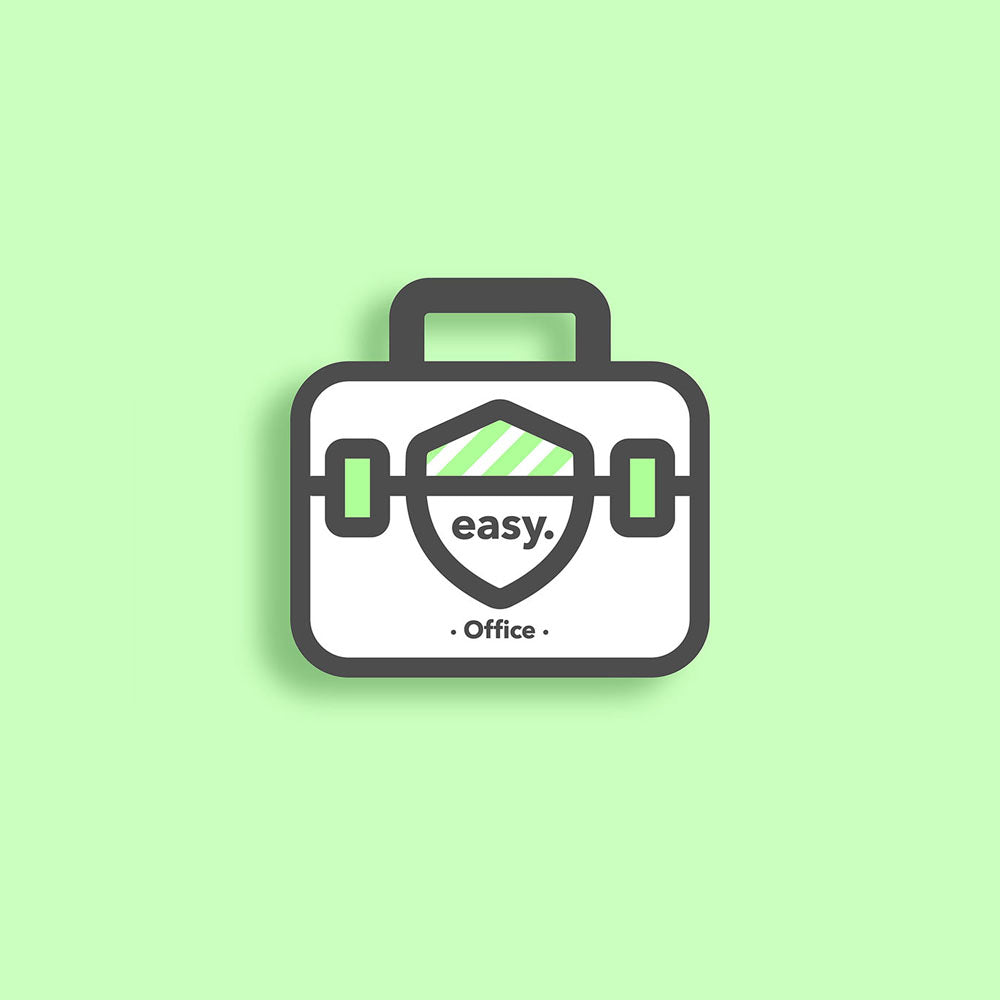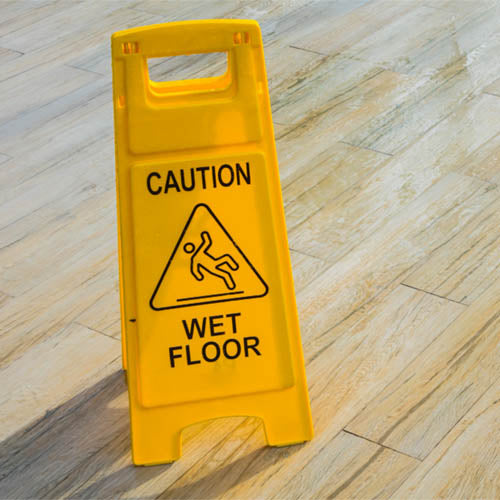
Office & Corporate Workplace Health and Safety Templates & Guidance
Pre-filled, editable health and safety templates for office-based businesses and corporate office environments — including risk assessments, policies, fire safety, and more to keep your workplace safe, professional, and compliant.

Keep your Office Safe and Compliant with Our Easy-to-Use Health and Safety Templates
Simplify health and safety management in your office, corporate workplace, or business premises with our professionally designed, ready-to-use templates. Whether you manage a small office, oversee multiple sites, or run a large corporate headquarters, our editable templates make it easy to stay compliant with health and safety regulations while protecting employees, contractors, and visitors from everyday workplace risks.
Each document is tailored to the office environment, covering key topics such as display screen equipment (DSE) use and workstation ergonomics, fire safety, electrical safety, manual handling, and preventing slips, trips, and falls.
Many templates come pre-filled with detailed office-specific content — including an office risk assessment, pregnant employee risk assessment, health and safety policy, COSHH documents, fire safety templates, accident report form, and staff safety guidance — allowing you to complete and implement them quickly and confidently. With our user-friendly tools, you can focus on running a productive, efficient, and compliant workplace while promoting the health, safety, and wellbeing of everyone in your organisation.

The Importance of Health and Safety in Modern Office Workplaces
In today's fast-paced office environment, it's easy to overlook the basics—like health and safety. However, this is more than a box-ticking exercise on a compliance sheet; it's the backbone of a thriving, productive workplace. Here we delve into why health and safety is so crucial in the modern office environment and how prioritising it can benefit both employees and employers alike.
The Foundation of Employee Wellbeing
Health and safety is not just about preventing accidents or complying with legal requirements; it's about creating an environment where employees can perform at their best. Poor lighting, inadequate ventilation, and uncomfortable workstations can lead to problems such as eye strain, fatigue, and musculoskeletal issues. By proactively addressing these issues, companies not only keep their staff healthier but also create a more efficient, productive work environment.
Building Trust and Commitment
When employees see that their health and well-being are a priority, it fosters a sense of trust and commitment. This positive culture leads to higher employee engagement and lower turnover rates, saving companies significant costs in the long run. Additionally, a healthy, satisfied team is likely to provide better customer service, strengthening the brand reputation.
Legal and Financial Implications
Ignoring health and safety can also have potentially severe legal and financial repercussions. Companies that fall foul of health and safety laws risk hefty fines, and in extreme cases, criminal charges. Moreover, workplace accidents and health issues can result in high insurance premiums and legal costs, not to mention the loss of skilled labour during recuperation.
The Technological Angle
Modern office working often involves the use of employee wellbeing technologies, from ergonomically designed furniture to software solutions that help with eye-strain and more. Embracing these advancements can go a long way in creating a safe and healthy work environment. For instance, standing desks and ergonomic chairs can help prevent back pain, while air purifiers can improve indoor air quality.
In Summary...
In a modern office work environment, health and safety plays a pivotal role in shaping a successful, happy, and productive workforce. By investing in positive health and safety measures, employers not only meet legal requirements but also demonstrate a commitment to their staff's well-being. As we've seen, this investment reaps significant benefits for both employees and the business as a whole. Therefore, it's high time we all take the crucial role of health and safety in the modern office seriously.
So, next time you walk into your office, take a moment to consider how your health and safety procedures are shaping your work environment—it's more important than you might think.
Top 3 Health and Safety Hazards for Offices & Corporate Workplaces:
-

Ergonomic Hazards
View ProductsOffice workers often spend long hours at their desks, typing away at keyboards and staring at computer screens. Poorly designed workstations can lead to a variety of musculoskeletal problems, including back pain, neck strain, and carpal tunnel syndrome. Inadequate chairs, desk heights, or keyboard setups can exacerbate these issues. It's crucial to carry out DSE assessments and have ergonomically designed furniture and to make adjustments tailored to individual needs.
-

Slips, Trips, and Falls
View ProductsThese incidents are among the most common yet frequently overlooked office hazards. Loose carpeting, cluttered walkways, exposed electrical cords, and spills can all contribute to a risk of falling or tripping. Slips, trips, or falls are not just painful but could result in long-term injury and are often costly for employers in terms of compensation and lost work time. Good housekeeping practices and immediate reporting of potential hazards can help prevent these accidents.
-

Stress and Mental Health
View ProductsStress and mental health are increasingly being recognised as significant health and safety concerns in the office environment. Heavy workloads, long hours, and high-pressure deadlines can lead to stress, anxiety, and even depression. Employers should actively assess these risks through regular risk assessments and implement effective stress management strategies such as mental health days, employee wellness programmes, and open dialogue about mental wellbeing.

Why pay expensive consultant fees when you can manage health and safety yourself?
Improve your compliance while saving time and money by creating health and safety documents, customised to your business, yourself. Our health and safety range for offices, office-based businesses, and corporate workplaces covers a suite of essential templates including health and safety policies, risk assessments, COSHH forms, fire safety templates, health and safety guidance, safety posters and more.
Benefits of managing health and safety yourself...
-

Improve safety
Health and safety at work is about preventing accidents, incidents and ill-health by assessing the work environment, the activities within it, and taking appropriate action.
-

Ensure compliance
Our ready to use templates, many of which are pre-filled, will enable you to quickly increase your compliance to health and safety law.
-

Save money
With health and safety consultants often charging upwards of £400 per day, there is a better way. Take control and save yourself time and money.

Office Health and Safety: Ensure Workplace Productivity and Compliance
In the fast-paced world of corporate office work, budgets are often tight and deadlines even tighter. It's easy to think that health and safety issues are less urgent than meeting deadlines or staying within budget. However, this is a misconception that could end up costing your business in the long run.
In an office setting, hazards may seem less obvious—things like ergonomically unfriendly furniture, clutter that poses tripping hazards, or poorly lit workspaces might appear trivial but can lead to significant health issues for your staff. Add to that the mental stress of demanding office work, and you've got a ticking time bomb of potential health and safety risks.
Failure to comply with regulations doesn't just endanger your team's well-being; it exposes your business to legal consequences, financial penalties, and damage to it's reputation. But there's a flip side: a well-designed, safe, and healthy work environment can increase productivity, reduce absenteeism, and improve overall staff morale. So, investing in health and safety isn't just a regulatory requirement; it's a strategic move that can yield real dividends for your business.
At easyhealthandsafety we take the friction out of health and safety for office based workplaces by providing ready-to-use templates and practical guidance that are affordable, simple to edit, and tailored to the environment.
Frequently Asked Questions
Office Health and Safety FAQs
How can I create a risk assessment for my office or corporate workplace?
The easiest way to create a risk assessment for your office or corporate workplace is to start with one of our pre-filled templates and adapt it to your workplace.
Our editable Office Risk Assessment Template provides a structured, step-by-step format that’s quick to complete. To create a compliant risk assessment, begin by identifying potential hazards, such as slips and trips, poor lighting, workstation setup issues, and electrical safety. Assess who might be affected, evaluate the level of risk, and decide on control measures to reduce or eliminate those risks.
Once completed, review and update your risk assessment whenever there are significant changes in staff, layout, or processes. Our template is specifically designed for office-based businesses and includes pre-populated hazards, controls, and guidance to meet the standards set out in the Management of Health and Safety at Work Regulations 1999.
For a complete solution, our comprehensive Office Health and Safety Template Bundle includes the Office Risk Assessment along with over 60 other essential documents — such as a Health and Safety Policy, Fire Safety Templates, COSHH Assessments, Accident Report Forms, and Staff Safety Guidance. It’s the quickest and most cost-effective way to manage compliance across every aspect of your corporate office environment.
Do corporate offices and corporate workplaces need to complete a risk assessment?
Yes — every office and corporate workplace must complete a suitable and sufficient risk assessment to comply with health and safety law.
Under the Health and Safety at Work etc. Act 1974 and the Management of Health and Safety at Work Regulations 1999, all employers have a legal duty to identify and manage workplace hazards. This applies to all offices — from small shared workspaces to large corporate environments.
A thorough office risk assessment helps identify issues such as slips, trips, poor ergonomics, electrical faults, and fire risks. Completing regular risk assessments demonstrates compliance with the HSE’s five-step approach: identifying hazards, determining who may be harmed, evaluating and controlling risks, recording findings, and reviewing them regularly.
Our editable Office Risk Assessment Template comes pre-filled with office-environment-related content, saving you time while ensuring compliance with health and safety requirements.
Even if your office employs fewer than five people, you are still required to carry out a risk assessment to identify and control workplace hazards. While you don’t have to keep a written record by law, having one is a strongly recommended best practice measure, as it demonstrates compliance and helps protect your business in the event of an inspection or incident. Once you employ five or more people, a written risk assessment becomes a legal requirement under health and safety regulations.
What health and safety documents do offices need?
Offices should have a set of key documents to stay compliant with health and safety regulations.
Every office should maintain a written Health and Safety Policy, Risk Assessment, Fire Risk Assessment, COSHH Risk Assessments, Accident Report Form, and relevant staff safety guidance. These documents show that your organisation is managing workplace risks responsibly and fulfilling its legal duties. If your office has five or more employees you must have written versions of these documents by law.
Our comprehensive Office Health and Safety Template Bundle includes a suite of over 60 essential documents, policies, and risk assessments — all editable, many pre-filled, and ready to use — helping you build a complete and compliant health and safety management system without hiring expensive consultants.
Do office based employers need a written Health and Safety Policy?
Yes — if your business employs five or more people, you are legally required to have a written Health and Safety Policy. However, even smaller offices benefit from having a formal policy as a best practice measure as it demonstrates a proactive approach to staff wellbeing and compliance.
Under the Health and Safety at Work etc. Act 1974, all employers must outline how they manage workplace safety, including roles, responsibilities, and arrangements for controlling risks.
Our fully editable Health and Safety Policy Template is easily adaptable for corporate office environments and includes pre-written content that can be easily tailored to your organisation, saving time while ensuring your policy meets HSE expectations.
What are the main health and safety risks in an office?
Common office hazards include poor workstation ergonomics and DSE use, slips and trips, electrical hazards, and fire safety concerns.
While offices may seem low-risk, injuries and illnesses still occur frequently due to poor posture, trailing cables, overloaded sockets, and stress. Our editable Office Risk Assessment comes pre-filled with office-environment related content helping you to identify and control these hazards easily and effectively.
Other hazards include manual handling, poor lighting, and inappropriate storage of cleaning chemicals. Regularly reviewing your risk assessments and staff training records will help prevent accidents and create a safer, more efficient work environment.
Do offices need a fire risk assessment?
Yes — all offices must have a suitable and sufficient fire risk assessment under the Regulatory Reform (Fire Safety) Order 2005.
Employers or building managers are responsible for identifying fire hazards such as electrical faults, paper waste, and blocked exits, then implementing measures to reduce risk. This includes testing alarms, maintaining extinguishers, and ensuring staff know evacuation procedures.
Our editable Fire Risk Assessment Template and Essential Fire Safety Template Bundle make compliance simple, providing example fire safety documents that are easily adaptable to your office working environment.
What COSHH assessments do offices need?
Offices using cleaning products, printer toner, paints, adhesives, hand sanitiser, or any other substances that are hazardous to health must complete COSHH assessments.
Under the Control of Substances Hazardous to Health (COSHH) Regulations 2002, employers must assess and control exposure to substances that could cause harm. Even low-risk environments such as offices may use products that contain irritants or chemicals harmful through inhalation or skin contact.
Our COSHH risk assessment templates make it easy to assess hazardous materials, storage requirements, and safe handling procedures. They’re designed to help offices comply with COSHH law and protect both staff, visitors, and cleaners.
How should office accidents and near misses be reported?
All workplace accidents, injuries, and near misses must be recorded promptly in an accident report form.
Accurate reporting helps employers spot trends, prevent future incidents, and demonstrate compliance with the Reporting of Injuries, Diseases and Dangerous Occurrences Regulations (RIDDOR). Even minor incidents — such as slips, equipment faults, or scalds from kitchen appliances — should be documented.
Our editable Accident Report Form Template provides an easy-to-complete layout for recording all essential details, ensuring that follow-up investigations and corrective actions can be tracked effectively.
What training do office staff need for health and safety?
Office staff should receive training in fire safety, DSE use, manual handling, first aid, and any other safety-critical activities relevant to the operations of your office.
The Health and Safety (Training for Employment) Regulations 1990 require employers to ensure that all staff are competent to perform their work safely. In an office, this includes induction training, workstation setup guidance, and evacuation procedures.
Our comprehensive Office Health and Safety Template Bundle includes a suite of over 60 essential documents, policies, and risk assessments — all editable, many pre-filled, and ready to use — helping your office ensure compliance to health and safety laws and regulations with ease.
How can I improve health and safety management in my office?
You can strengthen health and safety management by maintaining clear documentation, regular reviews, and active staff involvement.
Good management starts with consistent risk assessments, an up-to-date health and safety policy, and strong health and safety awareness. Reviewing your fire risk assessment, COSHH documents, accident logs and other documents at least annually (or sooner if significant changes occur) helps ensure continued compliance and reduces liability.
Our all-in-one Office Health and Safety Template Bundle includes a suite of over 60 essential health and safety documents — from risk assessments to policies to fire safety — to simplify compliance, reduce risks, and maintain a professional, safe workplace.
How can ergonomic assessments benefit my office and staff?
Ergonomic assessments, such as DSE (Display Screen Equipment) Assessments, are critical for identifying workstation or environmental factors that may contribute to musculoskeletal issues like back pain or carpal tunnel syndrome. Such assessments can guide adjustments to furniture or equipment, leading to increased comfort, reduced absenteeism, and ultimately, higher productivity.
Our editable DSE Assessment Template makes it quick and easy to assess workstation setups, ensuring compliance with the Health and Safety (Display Screen Equipment) Regulations 1992. It includes pre-filled guidance to help you evaluate desk layout, monitor height, seating posture, lighting, and screen time — reducing the risk of long-term strain and improving overall staff wellbeing.
For complete compliance management, our comprehensive Office Health and Safety Template Bundle includes the DSE Assessment alongside over 60 other essential documents — from risk assessments and health and safety policies to fire safety forms, COSHH documents, and accident report templates. It’s the all-in-one solution for maintaining a safe, comfortable, and fully compliant corporate office environment.
What steps can be taken to prevent slips, trips, and falls in the office?
Slips, trips, and falls are among the most common causes of injury in office environments, but they are also some of the easiest to prevent with the right precautions. Simple steps include keeping walkways clear of clutter, securing trailing cables, using non-slip mats in high-traffic areas, and ensuring floors are cleaned and dried properly after spills. Good housekeeping, adequate lighting, and regular safety checks all play an important role in preventing accidents.
Conducting a thorough Office Risk Assessment is one of the most effective ways to identify and manage slip, trip, and fall hazards. It allows you to assess flooring conditions, review workstation layouts, and evaluate maintenance procedures to minimise risks. Our editable template comes pre-filled with office-specific hazards and controls, helping you save time while ensuring compliance with health and safety regulations.
For a complete compliance solution, our comprehensive Office Health and Safety Template Bundle includes the Office Risk Assessment along with over 60 essential documents — such as a Health and Safety Policy, Fire Safety Templates, Accident Report Forms, COSHH Assessments, and Staff Safety Guidance. It’s the easiest and most cost-effective way to manage health and safety across your office, protecting both employees and visitors from avoidable risks.
What are the best practices for electrical safety in an office setting?
Electrical safety is essential in every office to prevent shocks, fires, and equipment damage. Best practices include ensuring all electrical installations are carried out by qualified contractors, using only PAT-tested equipment, and avoiding overloaded sockets or trailing extension leads. Regular visual inspections of plugs, cables, and appliances should be carried out, and damaged equipment must be removed from use immediately. Staff should also be trained to recognise electrical hazards and report faults promptly.
Carrying out a thorough Office Risk Assessment is a key step in managing electrical safety effectively. It helps identify potential risks such as faulty wiring, overloaded circuits, or the misuse of electrical devices. Our editable template includes pre-filled content specific to office environments — covering electrical hazards, fire risks, and control measures — ensuring compliance with the Electricity at Work Regulations 1989 while saving valuable time.







